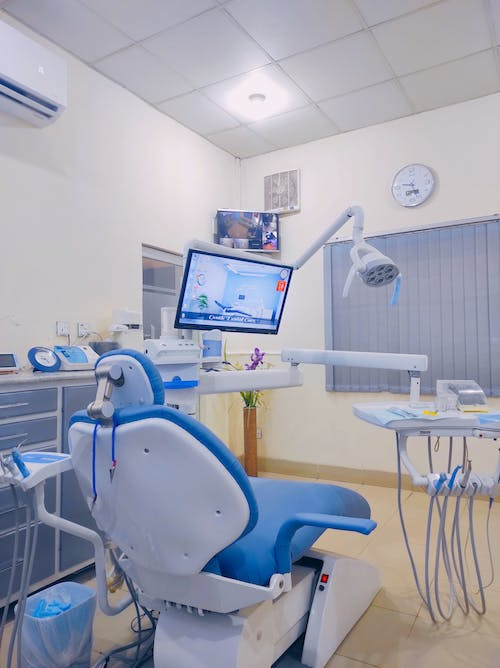According to 2020 statistics from the American Dental Association, dental work is the single most expensive medical procedure in the United States. Thus, getting dental insurance coverage is an important part of having good oral health. Without it, you may fall into the trap of overpaying for expensive procedures.
This is because dental insurance can cover major oral health-related expenses, including accelerated restorative treatments, such as dental implants and cosmetic dentistry, and non-accelerated restorative treatment, such as braces and dental crowns.
However, understanding most dental insurance plans can be confusing for people, especially those who don’t pay much attention to the details. For those who don’t know, there are different types, co-pays and deductibles, and many other things to consider when choosing a dental plan.
In this post, we’ll be covering everything you need to know about dental insurance plans, so you can make an informed decision on how much coverage you want and how much it will cost.
Different Categories of Dental Insurance Plans
1. Direct Reimbursement Programs
Patients who opt for direct reimbursement programs receive a set percentage of their overall dental care costs, regardless of the type of dental care they receive. This approach typically enables patients to visit the dentist of their preference and urges them to collaborate with the dental professional on healthy and cost-effective solutions. It also generally doesn’t exclude the coverage depending on the treatment type required.

2. “Usual, Customary, And Reasonable” (UCR) Program
UCR programs are the most basic type of dental insurance plan. They cover routine procedures — such as cleanings, fillings, extractions, and dentures — as well as emergencies that occur when a tooth is knocked out, or a cracked filling is exposed. A UCR program will pay for the treatment of an injury to any part of the mouth, including the gums if it’s caused by accident.
This initiative pays a predetermined portion of the dentist’s fee or, if it is less, the plan adviser’s “reasonable” or “customary” fee cap. These restrictions are the formal alliance between the third-party payer and the scheme acquirer. Even though these restrictions are referred to as “customary,” remember that they might not completely reflect the prices that local dentists charge.
3. Capitation Plan
A capitation program is a type of dental insurance plan in which the employer or family pays a fixed amount each month to the dentist. This can be either a monthly or annual fee.
A capitation program is often used by large employers with high employee turnover or large families because it allows them to spread out their monthly premium payments over as many patients as possible. In exchange, dentists promise to treat certain patient conditions for free. (There might be a patient co-payment option for some dental treatments.)

4. Table or Schedule Allowance Program
Most dental insurance coverages have a table or schedule of allowance programs. These are the specific procedures that are covered by the plan and how much they will be reimbursed for. Most plans offer at least some coverage for oral surgery and oral hygiene services.
The amount that you are reimbursed for each service depends on the plan’s deductible amount and whether any other conditions apply. If you use your dental insurance at an in-network dentist, you’ll likely receive much more reimbursement than if you go to an out-of-network dentist or a non-DIFY dentist (such as an independent practice).
What Gets Covered?

Most dental plans cover all of the standard procedures in the American Dental Association’s (ADA) guidelines, including cleanings and fillings, oral surgery, oral hygiene products, and X-rays. A part of the expense of preventive services, crowns, root canal procedures, and surgical intervention, including tooth extraction, are also typically covered by dental insurance.
Similarly, they may also cover prosthodontics, which includes dentures and bridges, orthodontics, and periodontics (the care of the tissues that support and encircle the tooth).
Two preventative healthcare visits are typically covered per year by most dental insurance coverage. The 100-80-50 insurance structure is what most plans use. Therefore, they pay 100% of the cost of preventive care, 80% of the cost of basic procedures, 50% of the cost of major procedures, or a higher co-payment. However, a dental insurance plan may decide not to pay for any procedures, like sealants.
Understanding Limitations For A Dental Insurance Plan
Here are some common limitations of a dental insurance plan:
- The maximum fee you can expect to pay for every service is usually set by your plan’s network providers. This can include any fee based on your diagnosis or procedure, such as an X-ray or cleaning.
- The maximum benefit is usually limited to $1 million per person, per lifetime. In addition, this amount cannot be combined with Medicare benefits or other types of dental coverage.
- You must meet your deductible before any other expenses are covered by your insurance plan, including copays and coinsurance amounts.
Get Trusted Dental Insurance Services in CA, Today
We understand how important it is for you to have quality dental insurance coverage when you need it most. This is why at Covered California Certified Agent, we’re dedicated to helping you find the best dental insurance plans in California, so you can get the dental care you need and avoid costly emergency visits.
Our team of certified insurance agents can help you find the dental insurance plan that fits your needs and budget.
For more details, feel free to reach out to us today by dialing 800-771-7653.